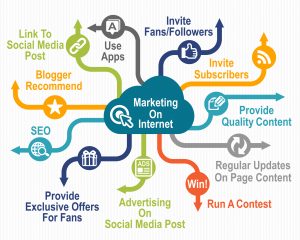 When I’m talking to people about marketing their reputation I often find that they haven’t really thought about the Why, Who, Where, What, When and How of their online marketing. Quite often the reason for embarking on it is ‘because everyone else is doing it and I don’t want to get left behind’. I think that with a bit of thought people won’t get left behind – they’ll be leading the way (or at least in the front runners)!
When I’m talking to people about marketing their reputation I often find that they haven’t really thought about the Why, Who, Where, What, When and How of their online marketing. Quite often the reason for embarking on it is ‘because everyone else is doing it and I don’t want to get left behind’. I think that with a bit of thought people won’t get left behind – they’ll be leading the way (or at least in the front runners)!
If you’ve been doing a bit of marketing let me invite you to stop DOING and spend a little time in reflective mode with a cup of coffee (and maybe a nice bun or biscuit).
WHY?
Why am I marketing my reputation? Why is it important to me/my business?
This may sound like an obvious question, but like all questions the easy answer doesn’t usually dig deep enough. What would you really like people to say about you or your business – and what outcomes would you like to get from your reputation marketing?
WHO?
Who am I trying to engage with?
If you don’t know exactly who you’re trying to reach, how will you find them? This is one of my ‘soapbox’ subjects – if you get your client profiles really nailed down it will change your entire business to generate much more profit! If you haven’t already, download the Perfect Client Worksheet and invest some time in REALLY answering the questions. If you’ve got more than one niche that’s fine, but you really need to be crystal clear about what your ideal customer looks like so you (and your network) will recognise them when they appear.
WHAT?
Lots of ‘whats’ – in two parts:
What is important to them?
What problems are they experiencing?
If you understand your perfect client really well, meeting their needs will be pretty straightforward. More to the point presenting your skills and knowledge in a way that gets their attention is easier too.
What can I do that will help them to tick their boxes?
What material will deliver information of interest and use to them?
When you know how to help your clients (or potential clients) talking to them becomes providing solutions and support, not sales. If you know what they’re interested in then delivering the right kind of content online becomes a no-brainer. Remember it’s never about what you want to say – it’s about what they want to hear.
WHERE?
Where are these people I want to engage with actively looking and listening?
When you’re clear about who you’re trying to reach, finding them becomes a simple matter. They may be in particular forums, active on certain social media platforms or involved in conversations or groups. What kind of posts might they read, who are they following on blogs and social media? Which journals and articles are they reading? Knowing all this makes it much easier to be visible in the places they will see you.
WHEN?
When are they most likely to be reading the type of content I’m producing?
If you know your audience well you’ll know their habits. I have clients who time social media posts to commuting time and other clients who target evenings and weekends, because that’s when their audience is most likely to be online. When you post a blog and promote it on social media choose a time when your audience is most likely to have time to read it.
HOW?
This is the nittygritty!
Everyone and every company is different so there isn’t a ‘one-size-fits-all’ approach. However, there are a few shortcuts that might be useful:
Don’t reinvent the wheel – repurpose material so:
One blog can be used:
- To create several social media posts (and post the image on Instagram and Pinterest)
- As the lead item in your newsletter
- In summary as a short article on LinkedIn (with a click through to the longer blog version on your website)
- As a ‘chapter’ in an ebook
- As part of a white paper or report
- To provide value in an email campaign
Value based social media posts – e.g. tips and shared knowledge can be posted to all your social media platforms – Twitter, LinkedIn, Facebook Page, Google+ Page – and then reposted in a month or more. As long as the content remains valid (so no date, season or event references) you’ll keep bringing people back to older posts, not just with a blog title, but with intriguing quotes that make people want to click to find out more.
Tools like Hootsuite, Tweetdeck and Feedburner provide means of distributing material quickly and easily, saving you time.
MailChimp, AWeber, GetResponse and Constant Contact give you the means to get your message to large audiences and to build relationships with specific sectors.
Next steps
It can sound overwhelming – but the secret is to use the Swiss Cheese approach; do something – anything – to poke a hole in the big task. Eventually you’ll have lots of holes and the big chunk of cheese won’t be so substantial!
